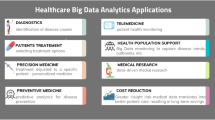Abstract
Quality Management occupies a strategic role in organizations, and the adoption of computer tools within an aligned information architecture facilitates the challenge of making more with less, promoting the development of a competitive edge and sustainability. A formal Information Architecture (IA) lends organizations an enhanced knowledge but, above all, favours management. This simplifies the reinvention of processes, the reformulation of procedures, bridging and the cooperation amongst the multiple actors of an organization. In the present investigation work we planned the IA for the Quality Management System (QMS) of a Hospital, which allowed us to develop and implement the QUALITUS (QUALITUS, name of the computer application developed to support Quality Management in a Hospital Unit) computer application. This solution translated itself in significant gains for the Hospital Unit under study, accelerating the quality management process and reducing the tasks, the number of documents, the information to be filled in and information errors, amongst others.





Similar content being viewed by others
Notes
Based on the Agile Manifesto from the Agile Alliance, a non-profit organization that promotes a software development paradigm through “lightweight” or agile methodologies.
References
Rocha, Á., and Rocha, B., Adopting nursing health record standards. Informatics for Health & Social Care 39(1):1–14, 2014. doi:10.3109/17538157.2013.827200.
CHKS. (2013). Caspe Healthcare Knowledge Systems. Obtido em 16 de Dezembro de 2013, de CHKS: http://www.chks.co.uk/index.php?id=528.
DR. (6 de Agosto de 2009). Despacho n.° 18226. Diário da República. INCM: Portugal.
Bradley, R. V., Pratt, R. M. E., Byrd, T. A., Outlay, C. N., and Wynn, D. E., Enterprise architecture, IT effectiveness and the mediating role of IT alignment in US hospitals. Information Systems Journal 22(2):97–127, 2012. doi:10.1111/j.1365-2575.2011.00379.x.
Drucker, P., Os novos paradigmas da administração. Exame, pp. 34–64, 1999.
Juran, J., History of Managing for Quality: The Evolution, Trends, and Future Directions of Managing for Quality. ASQC Quality Press, Milwaukee, 1995.
Kuechler, B., and Vaishnavi, V., On theory development in design science research: Anatomy of a research project. European Journal of Information Systems 17(5):489–504, 2008. doi:10.1057/ejis.2008.40.
Aken, J. E., Management research as a design science: Articulating the research products of mode 2 knowledge production in management. British Journal of Management 16(1):19–36, 2005.
Hoerbst, A., Hackl, W. O., Blomer, R., and Ammenwerth, E., The Status of IT Service Management in Health Care - ITIL® in Selected European Countries. BMC Medical Informatics and Decision Making 11(1):76–88, 2011. doi:10.1186/1472-6947-11-76.
Cots, S., and Casadesús, M., Exploring the service management standard ISO 20000. Total Quality Management & Business Excellence, 2014. doi:10.1080/14783363.2013.856544.
Oliver, D., and Lainhart, J., COBIT 5: Adding Value Through Effective Geit, EDPACS: The EDP Audit. Control, and Security Newsletter 46(3):1–12, 2012. doi:10.1080/07366981.2012.706472.
Disterer, G., ISO/IEC 27000, 27001 and 27002 for Information Security Management. Journal of Information Security 4(2):92–100, 2013. doi:10.4236/jis.2013.42011.
Mesquida, A. L., Mas, A., Amengual, E., and Calvo-Manzano, J. A., IT Service Management Process Improvement based on ISO/IEC 15504: A systematic review. Information and Software Technology 54(3):239–247, 2012. doi:10.1016/j.infsof.2011.11.002.
Lankhorst, M., Enterprise architecture at work: modelling, communication and analysis, 3rd Ed. Springer-Verlag, 2013. doi: 10.1007/978-3-642-29651-2_1.
OGS, TOGAF version 9.1. The Open Group, 2011.
IBM, Bussiness System Planning - Informaton Systems Planning Guide. IBM products, 1984.
Amaral, L., and Varajão, J., Planeamento de Sistemas de Informação, 4ª Edição. FCA- Editora de Informática, 2007.
Zachman, J. A., Enterprise Architecture: The Issue of the Century. Zachman Institute, Foothill Blvd, 1996.
Sowa, J. F., and Zachman, J. A., Extending and formalizing the framework for imformation systems architecture. IBM Systems Journal 31(3):590–616, 1992.
EOPUS, The Common Approach Federal Enterprise Architecture, Executive Office of the President of the United States, 2012.
Spewak, S. H., and Hill, S. C., Enterprise Architecture Planning: Developing a Blueprint for Data, Applications, and Technology. Wiley, New York, 1995.
Sayles, A., Development of Federal Enterprise Architecture Framework using the IBM Rational Unified Process and the Unified Modeling Language. Software Group, IBM, USA, 2003.
CIOC, Federal Enterprise Architecture Framework. Version 1.0, Chief Information Officers Council, USA, 2001.
Rocha, Á., and Sá, F., Planning the Information Architecture in a Local Public Administration organization. Information Development 30(3):223–234, 2014. doi:10.1177/0266666913489841.
Abbas, A. E., A method for benchmarking application in the enterprise architecture planning process based on federal enterprise architecture framework. Shahid Beheshti Un: Computer Engineering Department, 2010.
Huang, S., and Wang, X., Research on methods of integrated information systems based on BSP, Proceedings of The 2010 Fourth International Conference on Genetic and Evolutionary Computing, pp. 546–549. IEEE Computer Society, 2010.
Rocha, Á., and Santos, P., Introdução ao Framework de Zachman. Universidade Fernando Pessoa, Porto, 2010.
Mohammad, D., A New Methodology For Developing The MIS Master Plan. Review of Business Information Systems 13(1):15–24, 2009.
Mesquita, A., Tecnologias e sistemas de informação para a indústria da panificação e pastelaria: proposta de uma arquitectura de informação. Dissertação de Mestrado, Universidade de Trás-os-Montes e Alto Douro, Vila Real, Portugal, 2007.
Casagrande, N. G., Metodologia para Modelagem de Arquitetura de Informação estratégica para pequenas empresas: Uma aplicação no setor de turismo rural. Universidade Federal de Santa Catarina, Florianópolis, 2005.
Tomé, P. R., Modelo de Desenvolvimento de Arquitecturas de Sistemas de Informação. Universidade do Minho, Escola de Engenharia Guimarães. Tese Doutoramento, Guimarães, 2004.
Costa, P., A função Produção de SI/TI – Modelo Informacional. Universidade do Minho, Braga, 2002.
Souza, J. B., Uma metodologia para planeamento de arquitectura de informações. Dissertação de Mestrado. Florianópolis/SC: Universidade Federal de Santa Catarina, 2001.
Sakamoto, J. G. and Ball, F.W., Supporting business systems planning studies with e DWDC Data Dictionary. IBM products, 1982.
Sá, F., and Rocha, Á., Definição da Arquitetura de Informação em organismo da Administração Pública Local. RISTI - Revista Ibérica de Sistemas e Tecnologias de Informação 10:51–64, 2012. doi:10.4304/risti.10.51-64.
CIO. (2012). DIKW. Obtido em 10 de Outubro de 2012, de CIO Update: http://www.cioupdate.com/cio-insights/implementing-knowledge-management-part-i-concepts-approach-1.html.
Author information
Authors and Affiliations
Corresponding author
Additional information
This article is part of the Topical Collection on Systems-Level Quality Improvement.
Rights and permissions
About this article
Cite this article
Rocha, Á., Freixo, J. Information Architecture for Quality Management Support in Hospitals. J Med Syst 39, 125 (2015). https://doi.org/10.1007/s10916-015-0326-z
Received:
Accepted:
Published:
DOI: https://doi.org/10.1007/s10916-015-0326-z




